Revenue Operations (RevOps) has emerged as the single point of truth that aligns sales, marketing, and customer success around a unified revenue engine. But even the best‑aligned teams struggle to keep pace with today’s data‑heavy, multi‑channel landscape. That’s where AI in RevOps comes in. By automating routine tasks, uncovering hidden patterns, and delivering real‑time insights, artificial intelligence is turning RevOps from a bottleneck into a growth engine.
In this article we’ll dive deep into the key benefits of AI for RevOps, showcase real‑world applications, discuss challenges, and lay out a practical implementation roadmap. Whether you’re a RevOps leader, a C‑suite executive, or a business strategist, you’ll walk away with concrete actions to fuel revenue growth and operational efficiency.
1. Why AI Matters in Revenue Operations
| Traditional RevOps Pain Point | AI‑Enabled Solution | Impact |
|---|---|---|
| Manual lead qualification | Lead scoring AI | Faster pipeline build |
| Forecasting based on guesswork | Sales forecasting AI | 20–30 % higher accuracy |
| Reactive marketing | Marketing AI (predictive segmentation) | 15–25 % lift in conversion |
| Fragmented customer view | Customer experience AI (chatbots, personalization) | 30 % higher NPS |
- Data Volume & Velocity – Modern companies generate terabytes of data daily. Humans can’t keep up. AI systems ingest, cleanse, and analyze data in real time.
- Predictive Power – AI models turn historical data into actionable predictions, turning intuition into evidence‑based decision making.
- Scalability – As the customer base grows, AI scales linearly while human effort would balloon.
In short, AI in RevOps turns the “operational cost” of managing revenue streams into a competitive advantage.
2. Key Benefits of AI for RevOps
2.1 Accelerated Lead Scoring and Qualification
- Lead Scoring AI assigns scores to prospects based on multi‑dimensional signals: firmographics, behavioral cues, engagement history, and even intent data from third‑party sources. This prioritizes high‑value opportunities for sales reps.
2.2 Precise, Real‑Time Forecasting
- Sales Forecasting AI aggregates pipeline data, market trends, and macroeconomic indicators to generate day‑to‑day revenue projections. The result? Forecast drift reduced from 10–15 % to under 5 %.
2.3 Personalised Marketing at Scale
- Marketing AI automatically segments audiences, predicts content engagement, and triggers personalized journeys. Marketers see a higher click‑through rate and faster lead conversion.
2.4 Enhanced Customer Experience
- Customer Experience AI powers chatbots, recommendation engines, and proactive service alerts that anticipate customer needs, leading to higher retention and upsell opportunities.
2.5 Operational Efficiency & Cost Reduction
- Automation of repetitive tasks frees up revenue teams to focus on high‑impact activities. AI‑driven workflow optimization reduces manual errors and shortens the sales cycle.
3. Real‑World AI Applications in RevOps
| Application | Example Tool | How It Works | ROI Snapshot |
|---|---|---|---|
| Lead Scoring AI | HubSpot CRM with AI Insights | Uses machine learning to rank leads, integrating website visits, email opens, and form submissions. | 3‑month lift of 20 % in qualified opportunities. |
| Sales Forecasting AI | Clari | Pulls data from Salesforce, accounts for pipeline velocity, and produces rolling forecasts. | Forecast accuracy up by 25 %. |
| Predictive Marketing AI | Adobe Sensei | Analyzes cross‑channel behavior to deliver content predictions. | Conversion rates up 18 %. |
| Customer Experience AI | Zendesk AI | Chatbots auto‑resolve 40 % of Tier‑1 tickets, freeing agents for complex cases. | Customer satisfaction scores +12 %. |
Case Study 1: A SaaS Company Using Lead Scoring AI
- Challenge: 200+ leads per month, low conversion rate.
- Solution: Implemented HubSpot’s AI‑driven lead scoring.
- Result: Sales reps spent 30 % less time on cold calls; pipeline velocity increased by 15 %.
- Takeaway: AI can transform a chaotic lead intake into a disciplined, data‑driven funnel.
Case Study 2: A B2B Manufacturer Leveraging Sales Forecasting AI
- Challenge: Quarterly forecasting errors of 12 % due to seasonal fluctuations.
- Solution: Adopted Clari, which introduced predictive models that incorporate weather data, economic indicators, and sales rep performance.
- Result: Forecast accuracy rose to 95 %; inventory costs dropped 8 %.
4. Challenges & Considerations for AI Implementation
| Challenge | Why It Happens | Mitigation Tips |
|---|---|---|
| Data Silos | Disparate systems (CRM, marketing automation, CS platforms) don’t talk. | Implement a single source of truth or use middleware to sync data. |
| Data Quality | Garbage in, garbage out. | Invest in data hygiene, deduplication, and schema standardization. |
| Change Management | Teams fear job loss or added complexity. | Emphasize augmentation, not replacement; provide training. |
| Vendor Lock‑In | Proprietary AI models tied to a single platform. | Choose vendors with open APIs and a proven integration roadmap. |
| Cost & ROI Uncertainty | AI projects can balloon. | Start with a focused pilot; measure KPI impact before scaling. |
| Skill Gaps | Lack of data science talent in RevOps orgs. | Upskill existing staff or partner with consultants for model development. |
Key Principle
AI is only as good as the business context in which it’s deployed. Align the technology with your RevOps strategy, not the other way around.
5. Actionable Steps for AI‑Ready RevOps
Step 1: Audit Your Revenue Ecosystem
- Map Data Sources: CRM, marketing automation, support tickets, finance.
- Identify Gaps: Missing fields, inconsistent formats.
- Set KPI Benchmarks: Forecast accuracy, sales cycle time, NPS.
Step 2: Prioritize High‑Impact Use Cases
- Use the Impact–Effort Matrix:
- High Impact / Low Effort: Lead scoring AI, automated email triggers.
- High Impact / High Effort: AI‑driven pricing optimization, cross‑channel attribution.
Step 3: Build a Data Foundation
- Data Lake: Centralized storage for structured & unstructured data.
- Data Governance: Policies for ownership, security, compliance.
- Data Catalog: Metadata to help teams locate data quickly.
Step 4: Select the Right Vendor & Technology Stack
- Evaluate on:
- Model Transparency: Can you understand why a lead was scored?
- Integration Depth: API availability, native connectors.
- Scalability: Handles growth in volume & velocity.
- Support & Training: Dedicated RevOps expertise.
Step 5: Pilot & Iterate
- Define Success Metrics: E.g., lead qualification time, forecast drift.
- Run a Controlled Experiment: 3–6 month pilot with a subset of reps.
- Collect Feedback: From sales, marketing, and CS.
- Iterate: Refine models, adjust thresholds, retrain.
Step 6: Scale & Embed
- Governance Board: Cross‑functional oversight.
- Documentation: Model life‑cycle, versioning, audit trails.
- Continuous Learning: Retrain models quarterly with new data.
Step 7: Measure ROI and Communicate Results
- Revenue Impact: Additional pipeline, closed deals, upsell revenue.
- Operational Savings: Time saved, reduced churn, lower CAC.
- Publish Dashboards: Real‑time KPI visualizations for executives.
6. Aligning AI with Your RevOps Strategy
| RevOps Pillar | AI Opportunity | Strategic Benefit |
|---|---|---|
| Demand Generation | Marketing AI (content recommendation, intent scoring) | Higher MQL-to‑SQL conversion |
| Sales Execution | Lead Scoring AI, Sales Forecasting AI | Faster cycle, accurate forecasting |
| Customer Success | Customer Experience AI (chatbots, predictive support) | Lower churn, upsell acceleration |
| Revenue Analytics | Revenue Growth AI (predictive analytics, cohort analysis) | Informed pricing, partnership decisions |
By mapping AI capabilities to each RevOps pillar, you create a holistic AI‑enabled revenue enginethat delivers incremental gains across the entire customer journey.
7. Future Trends to Watch
- Generative AI for Content – Auto‑generated email sequences, proposal drafts, and even pricing proposals.
- Edge AI – Real‑time AI inference on mobile devices for sales reps in the field.
- Explainable AI – Models that provide human‑readable justifications for predictions, boosting trust.
- Integrated AI Suites – End‑to‑end platforms that combine lead scoring, forecasting, and customer insights in a single UI.
Staying ahead of these trends will keep your RevOps function future‑proof and competitive.
8. Conclusion: The AI‑Powered RevOps Imperative
RevOps has always been about breaking silos and aligning the revenue machine. AI takes that alignment to a new plane—turning data into a predictive, real‑time compass that guides every decision. From lead scoring AI that unlocks more qualified opportunities, to sales forecasting AIthat sharpens budgeting accuracy, the benefits are tangible and measurable.
However, the promise of AI only materializes when it is thoughtfully implemented—starting with a clear audit, a focused pilot, and a governance framework that safeguards data quality and ethics. Equip your RevOps team with the right tools, the right talent, and the right mindset, and watch your revenue engines run smoother, faster, and smarter.





Follow us on social media